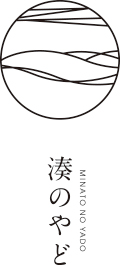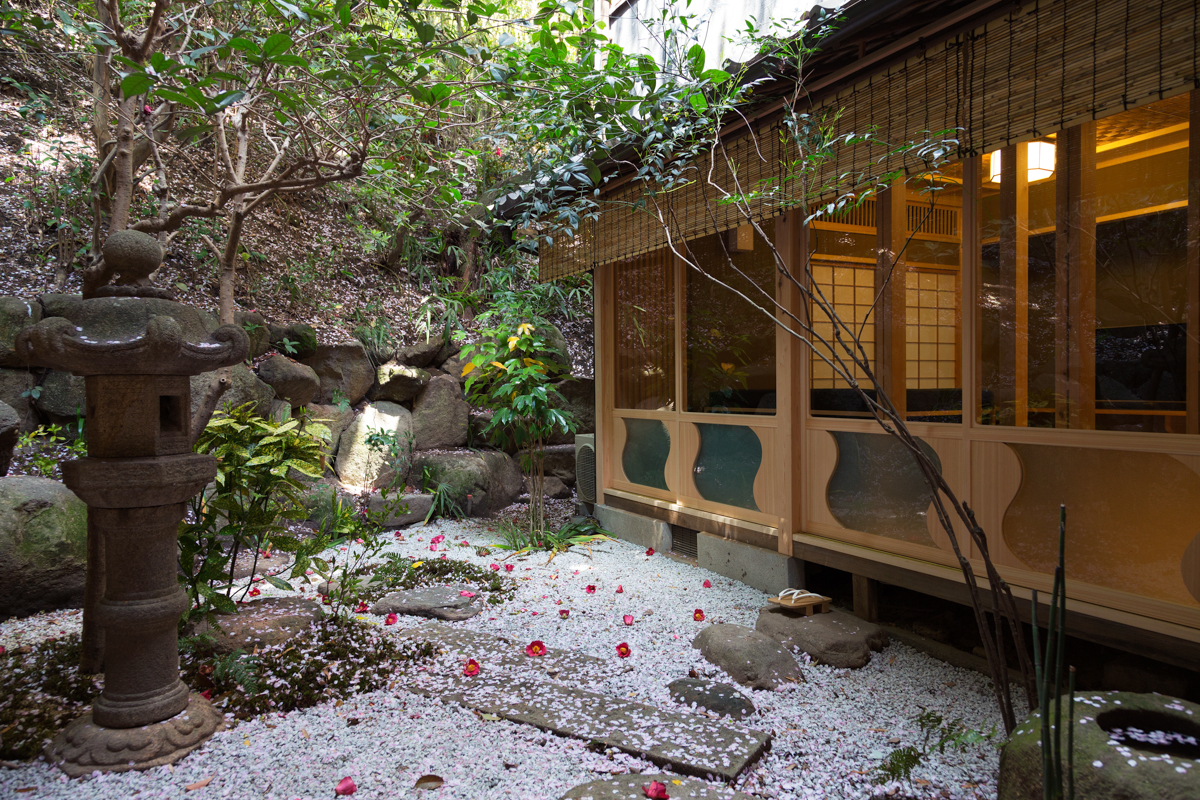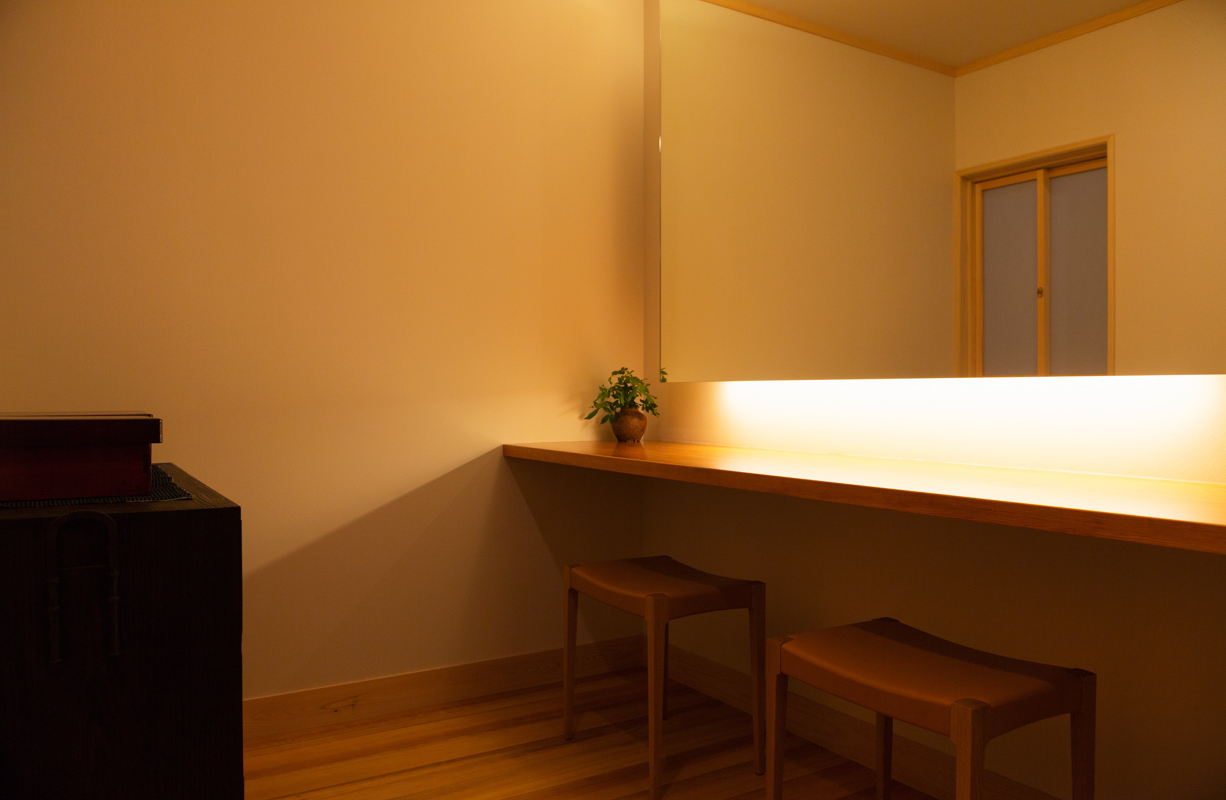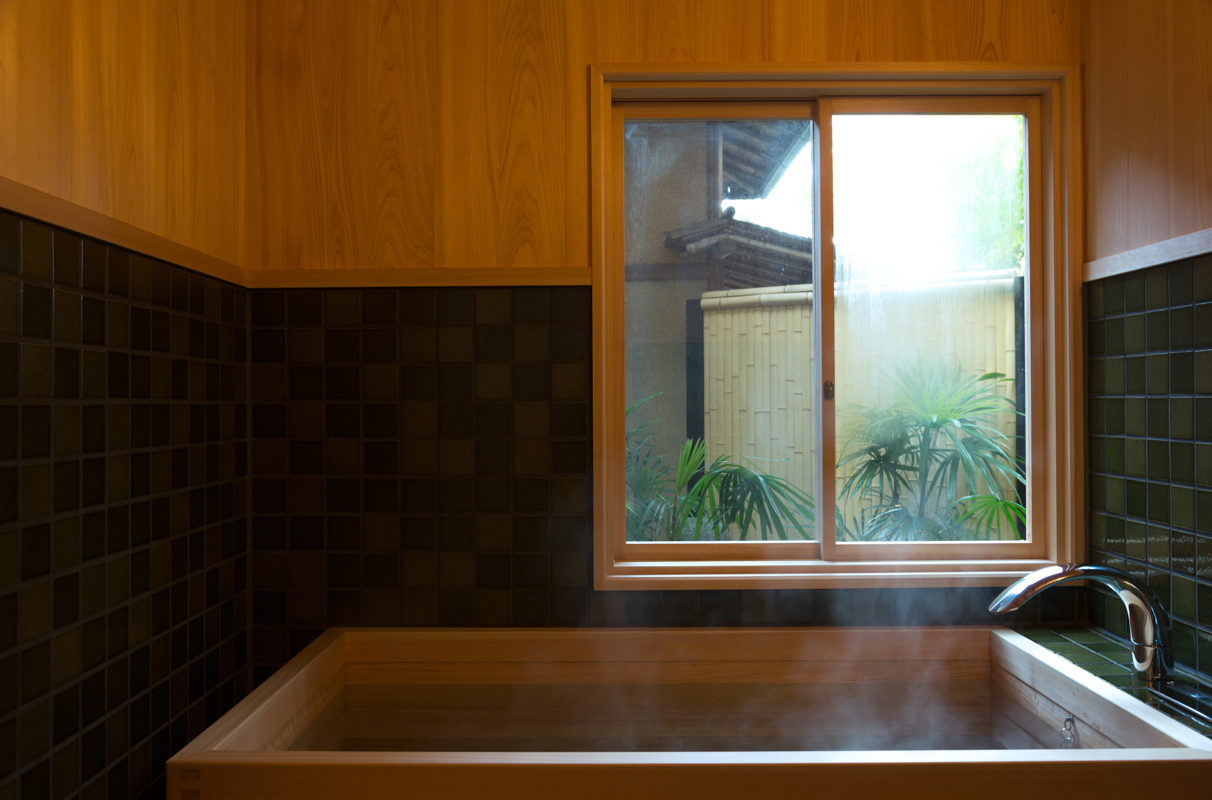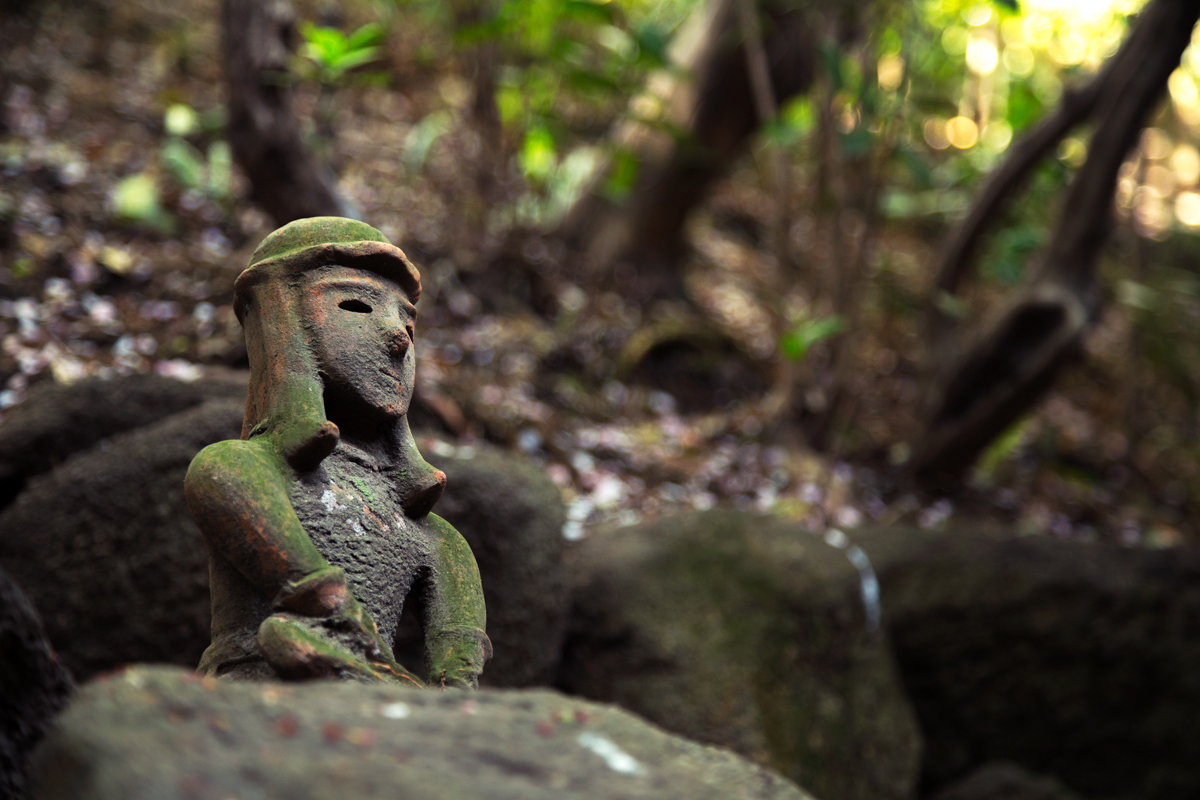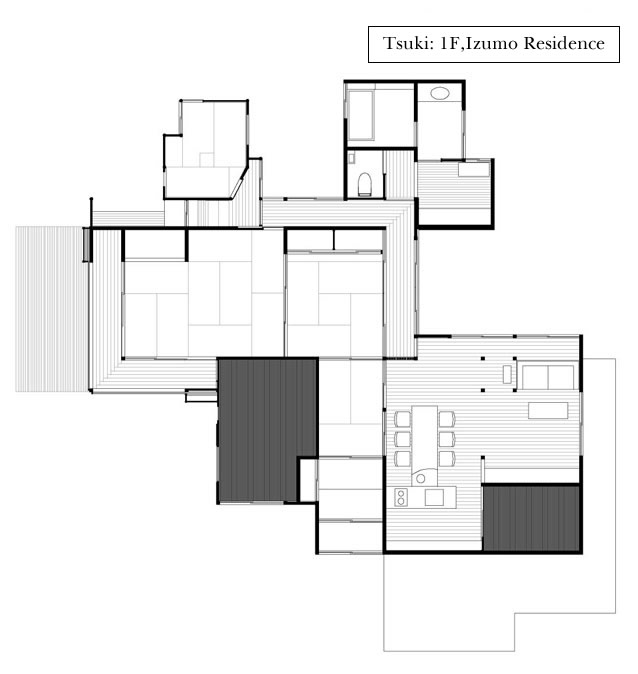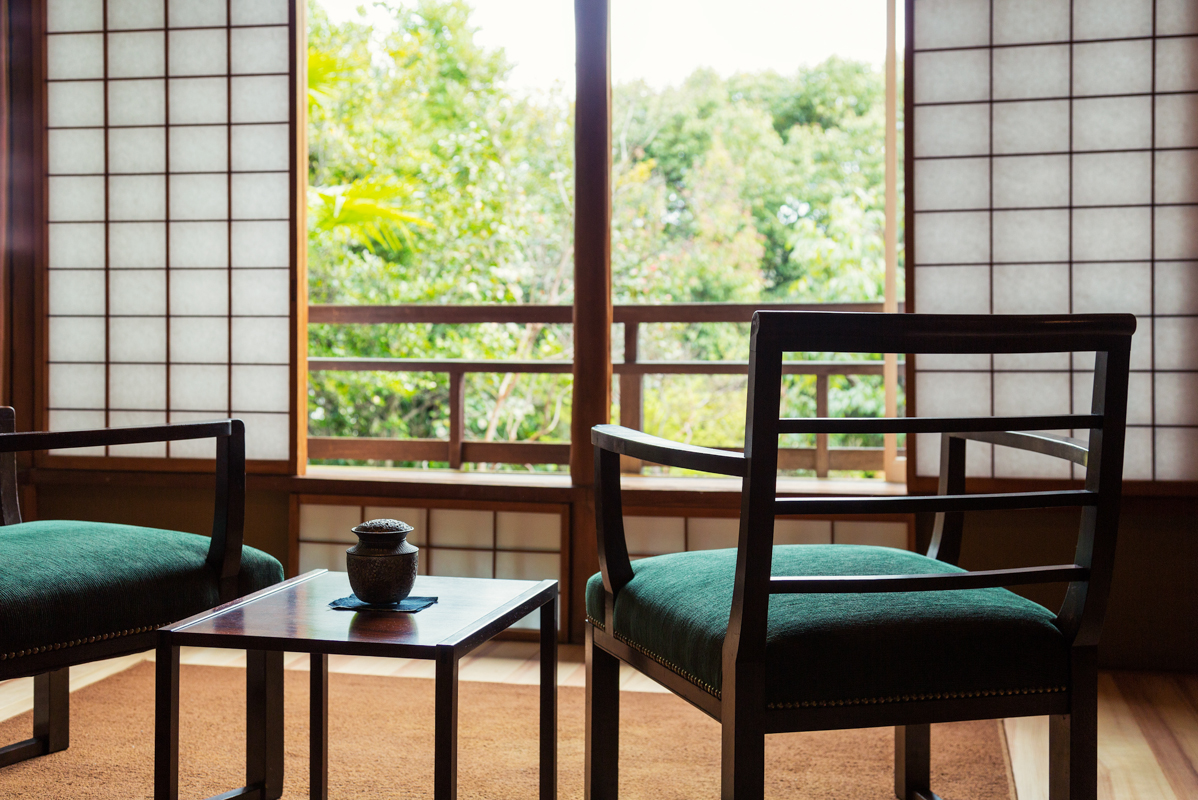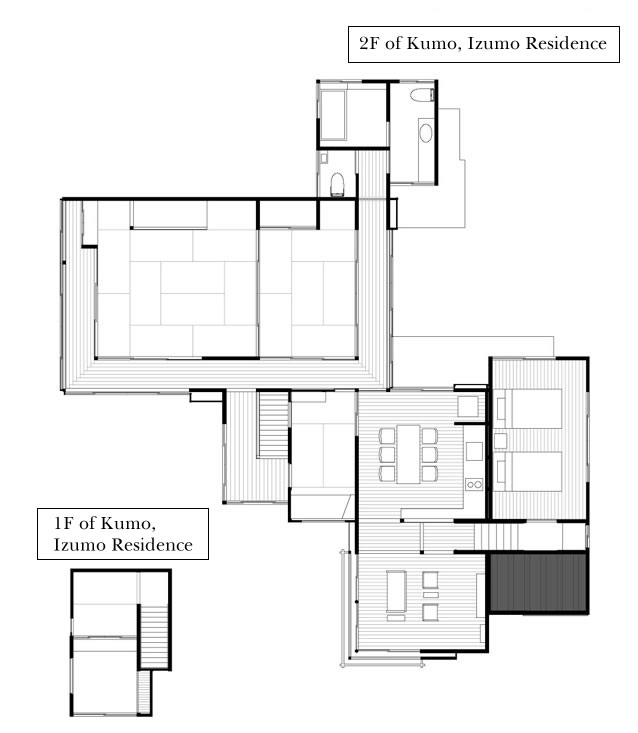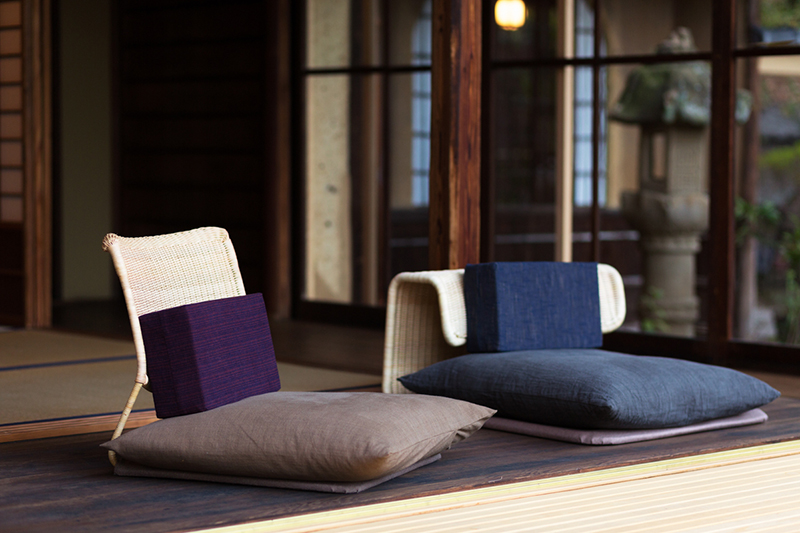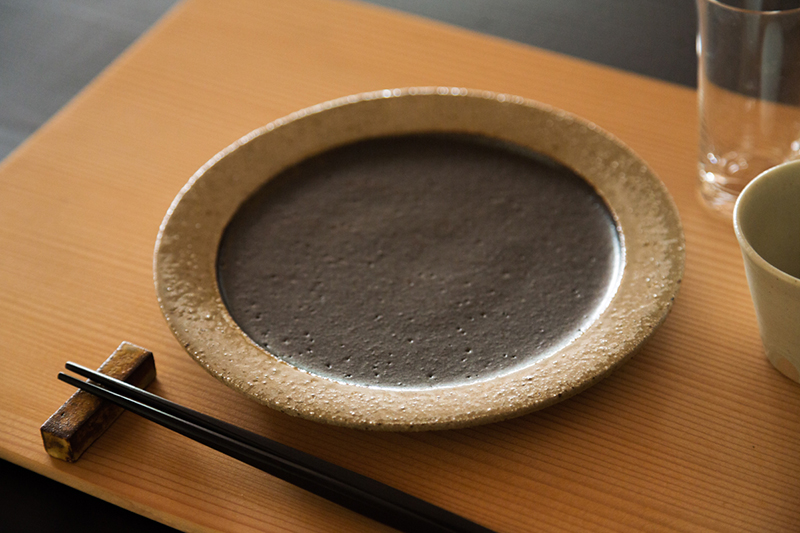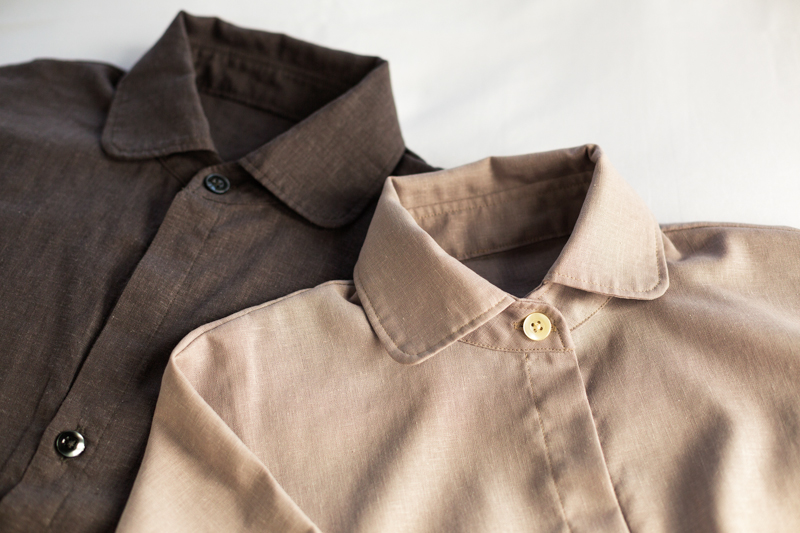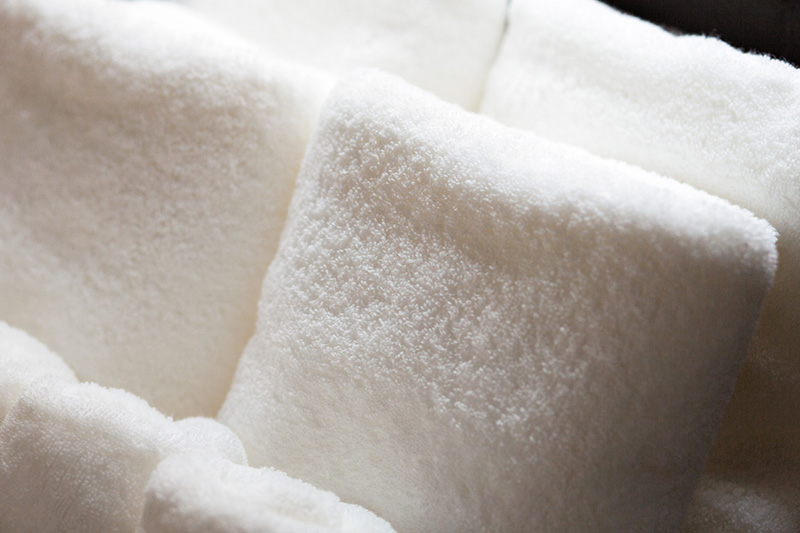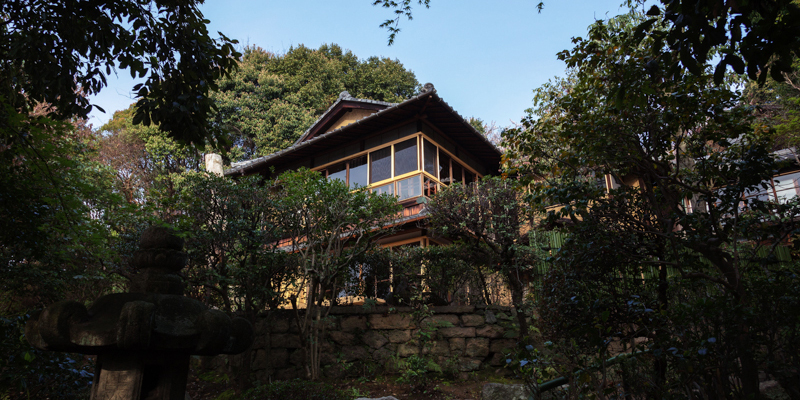
– Weary travelers can relax with a cup of tea by moonlight.
Beyond the Western-style Shimazui Manor lies another mansion, this time with white plaster walls that harken back to the Edo Period. Locals call this place Izumo House.
The mountain side of Onomichiwas considered a sacred area. Only shrines and temples were built here. But near the end of the Edo period, Izumo House, a mansion that overlooks the town and the sea, existed as a district office and residence for salt and cotton traders. The exact year in which the house was built is unknown, but the first floor tea room is in the style of the Edo period. We renovated this historical property based on our impression of how its former occupants lived.
Izumo House is divided into lower and upper levels.
Guest Rooms
月 – tsuki
Japanese tatami mattress room connecting to a seasonal garden, “Tsuki”of Izumo House
The first floor, called Tsuki, is named after the moon. It features a wide porch
that extends into the garden, and is a perfect spot for gazing at the moon. The tea room in the back offers a glimpse into traditional Japan.
雲 – kumo
Japanese tatami mattress room with a view of Onomichi Channel, “Kumo” of Izumo House
The second floor, called Kumo, is named after clouds. At the top of the stairs, on the left, there is a small tea room specially designed for Sencha, green tea. On the right is a passageway leading to a view of the Onomichi waterway, enjoyed by many over generations.
Guest Room Specifications
| Room space (Tsuki) | Japanese rooms (10.5 tatami mattresses / 4.5 tatami mattresses), dining / kitchen, living room, tearoom, powder room and bathroom |
| Room space (Kumo) | Bedroom, Japanese rooms (10.5 tatami mattresses / 4.5 tatami mattresses), dining / kitchen, living room, Sencha tearoom, and bathroom |
| Equipments (for each Tsuki and Kumo) | TV / refrigerator / microwave / toaster / rice cooker / IH cooking panel heater / dishware / cooking utensils *Kumo: Two Simmons brand beds (semi-double, 1200 mm (Width) x 2030 mm (Length) x 250 mm (Thickness)) |
| Amenities / Equipment (for each Tsuki and Kumo) | Shampoo, conditioner, body soap, toothbrush / hair brush / hair dryer / face towels / bath towels |
| Available Items | BD player compatible / iron / seasonings (sugar, salt, soy-sauce, vinegar, salad oil) |
| Lease Contract (for both Tsuki and Kumo) | Setouchi Minato-no-yado maintains the beauty of old buildings in Onomichi as they were in their heyday. The houses are not ryokans or hotels, but homes for rent. Accordingly, we ask that guests sign a lease contract for a designated period of time at check-in. *Check-in time is from 15:00 to 20:00. Check-out time is by 11:00. *When you check in, we'll explain house usage and ask you to sign a lease contract. |
Architect
中村 昌生
Masao Nakamura
Biography
1927 Born in Aichi Prefecture
Has spent years investigating the traditions of Japanese architecture,
both through research and the construction of tearooms and
Tea Ceremony houses.
1961 Became Doctor of Engineering.
1962 Became Assistant Professor at Kyoto Institute of Technology.
Became Professor at Kyoto Institute of Technology.
1971 Published “Kyo no Machiya (Traditional Townhouses of Kyoto)
with Shin Shin-do Publishing Company
Published “Kyo no Tsuboniwa (Spot Gardens of Kyoto)”
and “Kyo no Zashiki (Tatami rooms of Kyoto).
Won the Architectural Institute of Japan Award.
Published “Chasho to Kenchiku (Tea Masters and Architecture)”
with Kashima Institute Publishing Co., Ltd.
Published “Chashitsu no Kenkyu (Tearoom Research)”
with Bokusui Shobo Company.
1976 Became a member of the Katsura Detached Palace Maintenance Council.
1980 With comrades, established Kyoto Traditional Architecture Association to succeed
and develop traditional building skills.
1986 Became an expert member of the Council for the Protection of Cultural Properties.
1987 Published “Sukiya Teitaku Shusei (Tea Ceremony House Collections)”
Vol. 1-3 with Shogakukan Inc.
1990 Won a Kyoto Shinbun Newspaper Cultural Award.
1991 Became Honorary Professor at Kyoto Institute of Technology.
Became Professor at Fukui University of Technology.
1992 Became Chairperson of Kyoto Traditional Architecture Association.
1998 Was honored as a Kyoto City Cultural Contributor.
2000 Published “Sukiya no Kukan (Space in Tea Ceremony Houses)”
Vol. 1-2 with Tankosha Publishing Company.
2001 Won the first Maruyama Culture Award.
2002 Became Honorary Professor at Fukui University of Technology.
2011 Established “Association for Bequeathing Tradition to the Future”
with his comrades.
